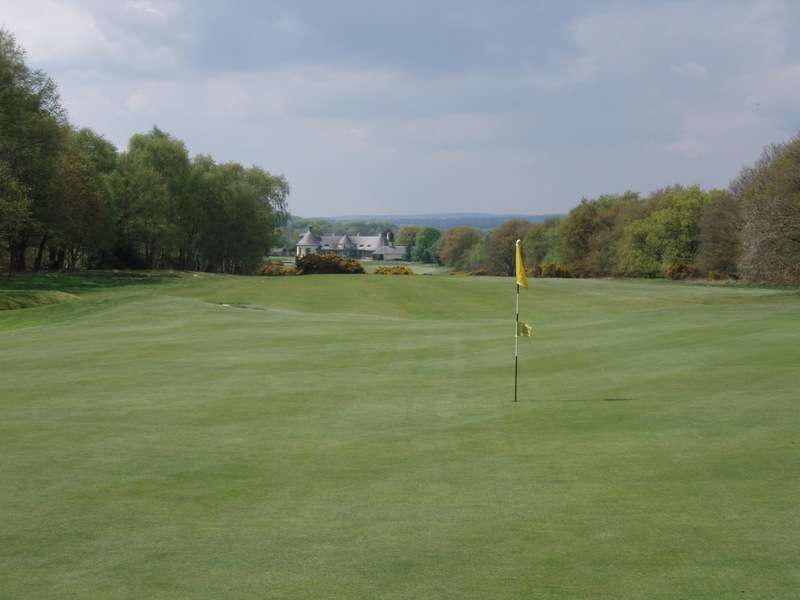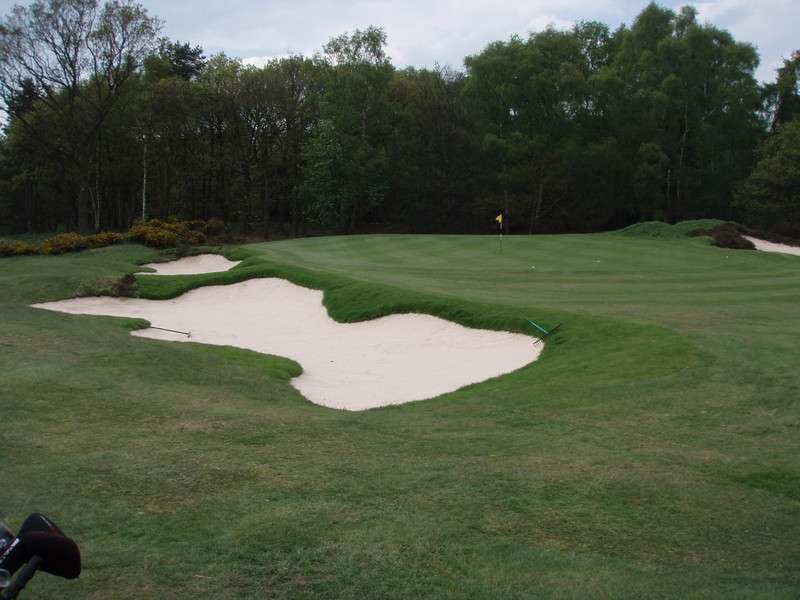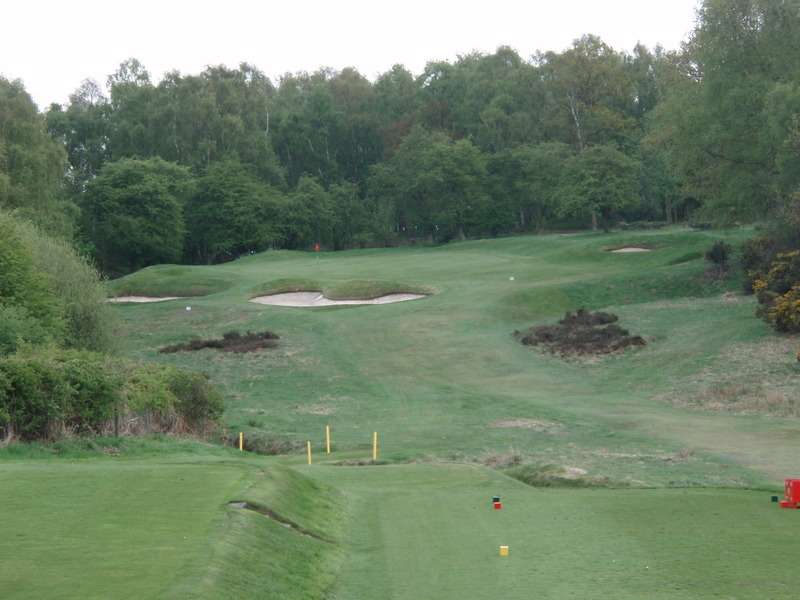From behind the 2nd green, the golfer can look back over the 700 yards of tight heathland turf, heather and gorse that comprises the opening two holes, heading in a straight climb up and away from the clubhouse
New bunkering at the par three 7th shows the style the club hopes will maintain its early 1900s aesthetic
A golfer looking to reach the par five 10th in two shots needs to follow his slinging hook off the tee with a brave long iron, hybrid or wood over the water and sand that guard the steep green
The par three 11th plays uphill to an attractive green benched in a hillside - a post-1907 hole that was made possible after the purchase of land on which the 10th green also sits
This snaking expanse of sand guards the green at the difficult 16th, which is part of a card-wrecking home stretch consisting of a 200-yard par three and four two-shotters averaging 432 yards each!
Course name: Alwoodley
Location: Leeds, Yorkshire, England
Four Word Course Review: MacKenzie's statement of intent
I was sitting before my round in a quiet room of Alwoodley's very handsome clubhouse with my host and playing partners, drinking tea and talking about the history of the club, dating to 1907 when Alister MacKenzie began his long and distinguished design career by laying out the club's 18 holes through rolling Yorkshire heathland.
"This is amazing," I thought to myself. "Just think of all the amazing folk - MacKenzie and Harry Colt just for starters - who must have sat in this same room, drinking tea and making the decisions that led to this club and course becoming so great."
Almost as if reading my mind, one of my partners piped up: "They really did a great job building the new clubhouse in the nineties, didn't they? Sitting here, you'd never guess it's so new."
So that swiftly ended that fantasy...
MacKenzie may have gone on to design courses more acclaimed than Alwoodley, but as his debut design effort it's fascinating for the features that show his vision and perhaps inspired famous holes to follow, such as the tee shot at the par five 10th that asks for a brave slinging draw skirting trouble if you hope to reach the green in two, just as on the 13th at Augusta National. The second shot then dares you to hit a long approach over a fronting hazard (water right, sand left) to a slick, steep green.
In fact the current greensite was not part of MacKenzie's original design because the club didn't own the land, but a drawing exists in which he plotted how the hole could be designed if the land were available. When the purchase was made in the 1930s his vision was realised (though by then his association with the club had ended). In fact, his original plan of the course, hanging in the clubhouse, shows just how little it has changed in 103 years.
The other 17 greens all sit where MacKenzie placed them and it's a testament to his foresight regarding golf equipment technology that his ethos of walking forward from green to tee is still in place on most holes, despite the extra length added to the course by building new tees. Seeing that such a move would be necessary, a buffer was left to allow tees to be moved back without the golfer having to trek backwards.
Less seen at Alwoodley are the dramatic greens MacKenzie built at the likes of Pasatiempo and Augusta National, but the 15th green is a pointer to what was to come at those and other courses. The green as a whole heaves left with a severe false front, but a narrow portion of the right-hand side rejects balls on that side and the rear of the putting surfaces tilts away from the fairway.
The subtlety and great use of the land stood out to me most: the two-tiered 3rd green of which the lower left side is hidden until the golfer gets within 100 yards of the green, the slight tucking of the 4th green behind a gorse-clad hill and over undulations that could wreak havoc on the running approach most golfers will have to employ to reach the green in two, the lateral spread of tees that changes angles and strategies and the open mouths to all greens bar the 11th that soften the challenge for lesser golfers.
The bunkering was a mixed bag of more rustic heather-trimmed traps and newer bunkers - many of which the club is in the process of restoring to an early 1900s look. Two that stood out to me as functional and eye-catching were S-shaped bunkers of different sizes that guard the front left of the 13th and 16th greens.
The sidehill par four 5th was also bunkered in a both functional and attractive fashion. Likewise the par three 7th, which was rebunkered last winter, and the brilliant par five 8th, which narrows 160 yards from the green thanks to a vicious bunker surrounded by heather that originally stretched all the way across the parallel 8th and 9th holes.
Alwoodley Golf Club has definitely moved with the times to ensure its course remains the test of decision making and shotmaking its creator designed it to be, but not at the expense of the wonderful and rich history it possesses.
It was a highlight for me to have visited a course with such a unique place in the game, and the experience has me more keen than ever to see more of MacKenzie's best work.
Friday, May 14, 2010
Subscribe to:
Post Comments (Atom)





No comments:
Post a Comment